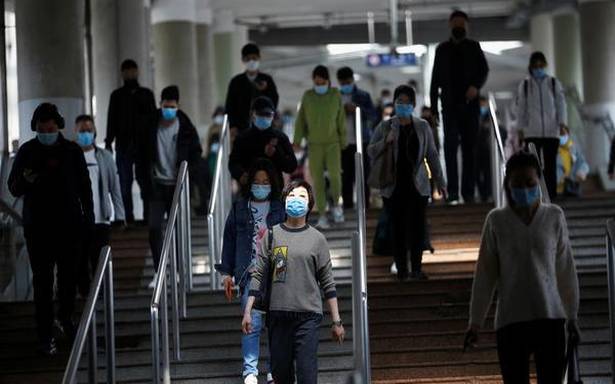Patient data from southeast Asian nations show that a significant share of COVID-19 patients passed on the infection to others when they were not showing any symptoms (during the pre-symptomatic period).
Also, the ability of a symptomatic patient to transmit the infection drops to very low levels just a week after the onset of symptoms. However, they may continue to test positive for the disease.
Infectious period
In China, 77 infector-infectee pairs (or primary case-secondary case pairs) were studied to measure the infectious period (IP) of the primary COVID-19 cases. Infectious period is the time taken for the primary case to transmit the infection to the secondary case(s).
When does infectiousness peak?
Viewing in app? Click to see graph
Graph appears incomplete? Click to remove AMP mode
The above chart shows that isolating only symptomatic patients will not be effective. Contact tracing secondary infections well before symptom onset is important.
Also read: Data | Is India undercounting its COVID-19 deaths?
Contact history
In Taiwan, 100 primary patients and their 219 family contacts were studied. Only 11 contacts turned positive. All the 11 were among the 176 who contacted the primary patients within the first five days of their symptom onset.
The crucial period
Viewing in app? Click to see graph
The above chart shows that after just 5 days of onset of symptoms in primary contacts, the transmission of infection approaches 0%.
Negative result
Analysis of 766 COVID-19 patients in Singapore shows that 30% tested negative (by nasopharyngeal swab) by day 15, 68% by day 21, 88% by day 28 and 95% by day 33. Thus, some patients may continue to test positive even after a month of illness.
How long before patients test negative?
Viewing in app? Click to see graph
However, the first two graphs show that their ability to transmit the infection drops to very low levels a week after the onset of symptoms.
Last word
As the patients’ ability to transmit the virus drops to low levels after a week of the onset of symptoms, they may be discharged early. This will significantly destress the hospital sector.
Testing and isolating pre-symptomatic patients sooner may significantly reduce the disease spread.
Sources
He, X., Lau, E.H.Y., Wu, P. et al. Temporal dynamics in viral shedding and transmissibility of COVID-19. Nat Med 26, 672–675 (2020)
Cheng H, Jian S, Liu D, et al. Contact Tracing Assessment of COVID-19 Transmission Dynamics in Taiwan and Risk at Different Exposure Periods Before and After Symptom Onset. JAMA Intern Med. Published online May 01, 2020
Also read: COVID-19 | State-wise tracker for coronavirus cases, deaths and testi

